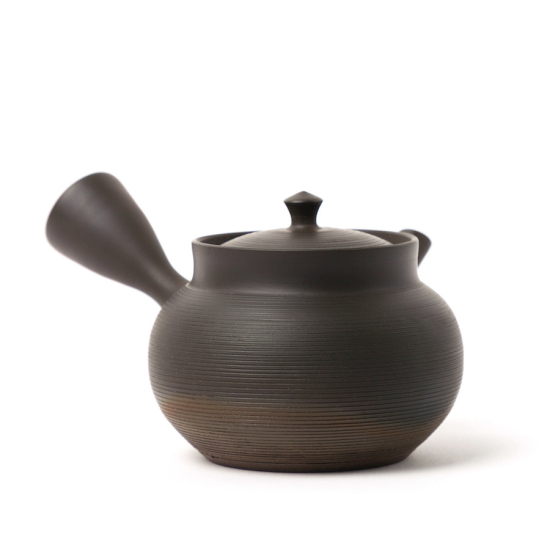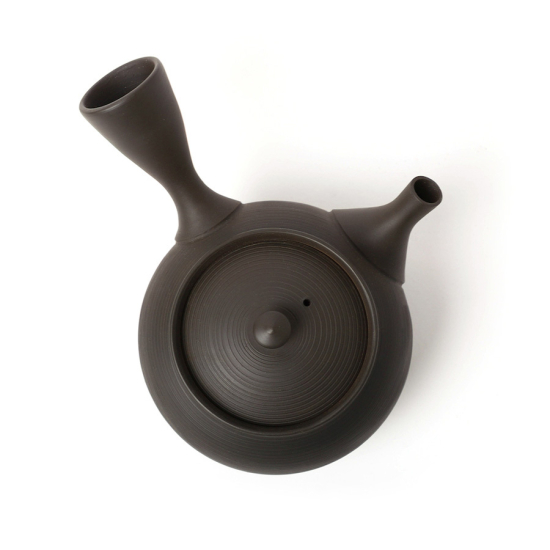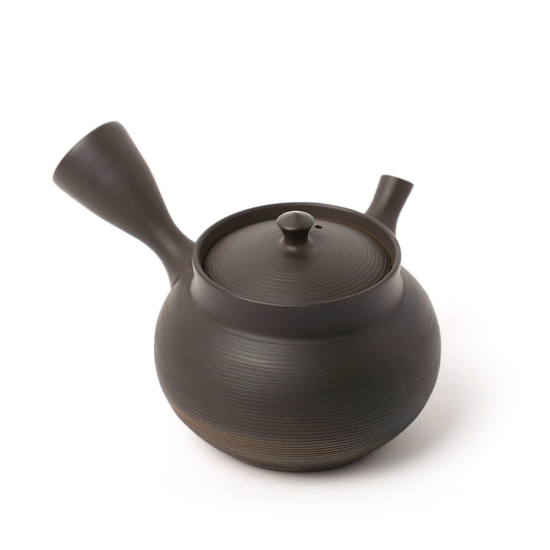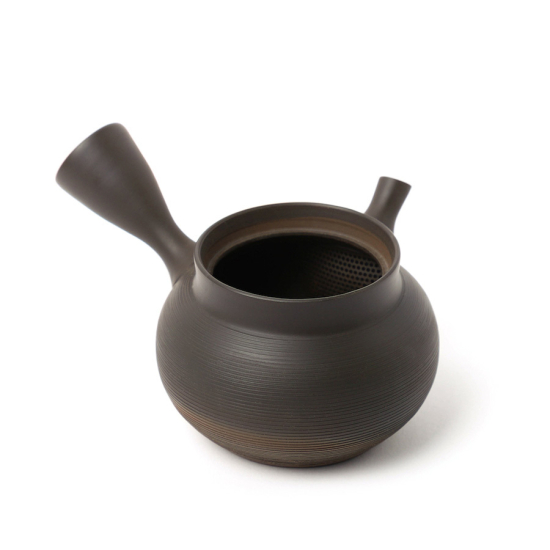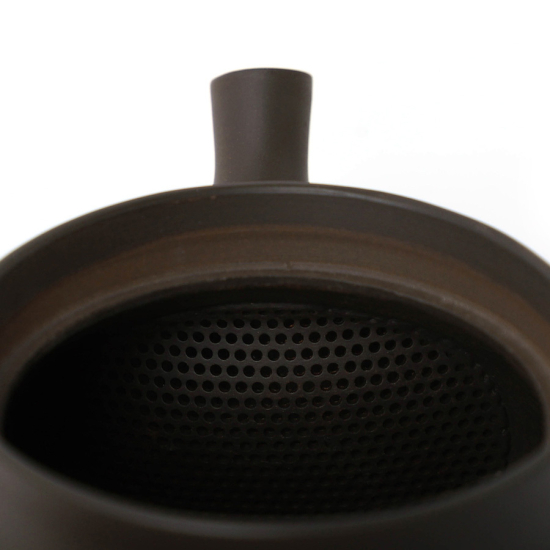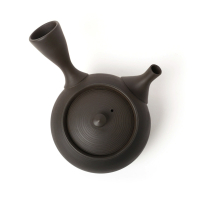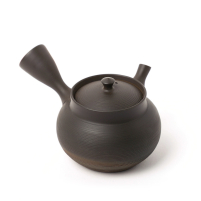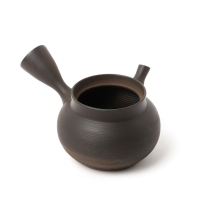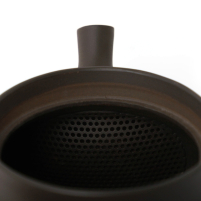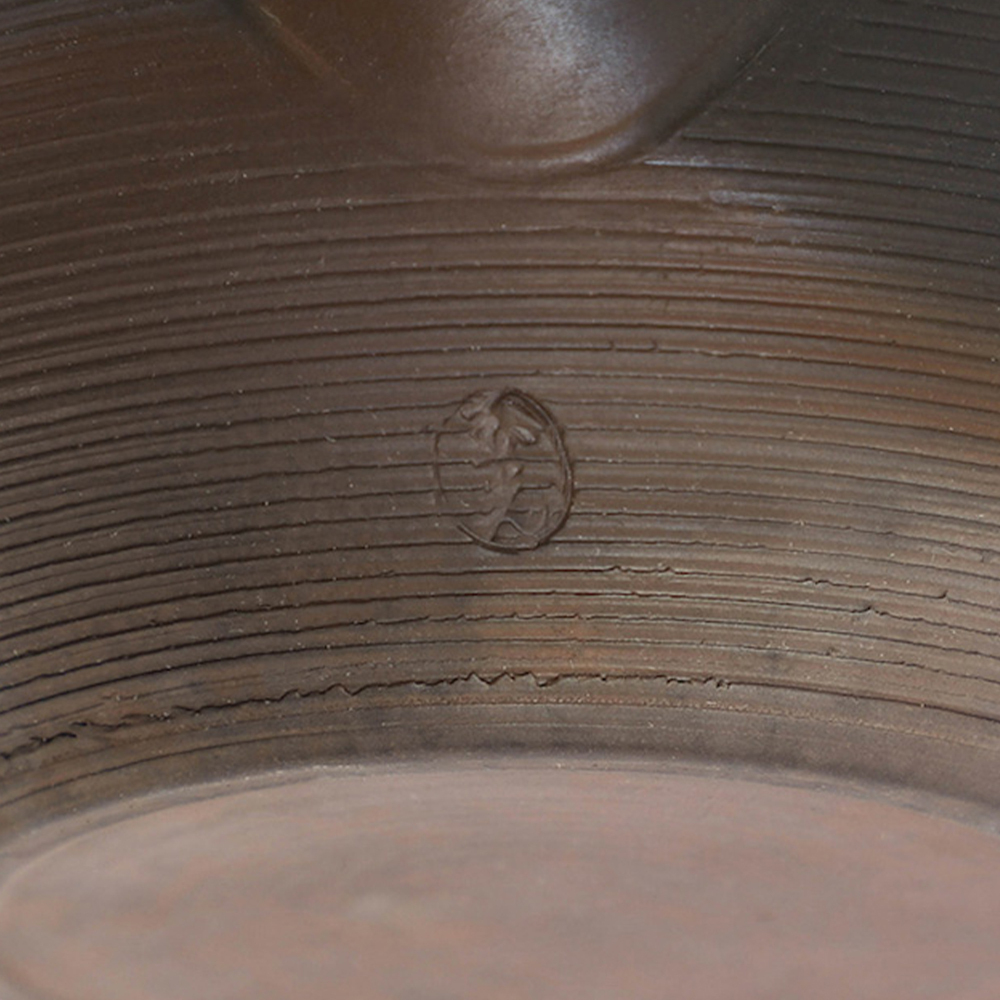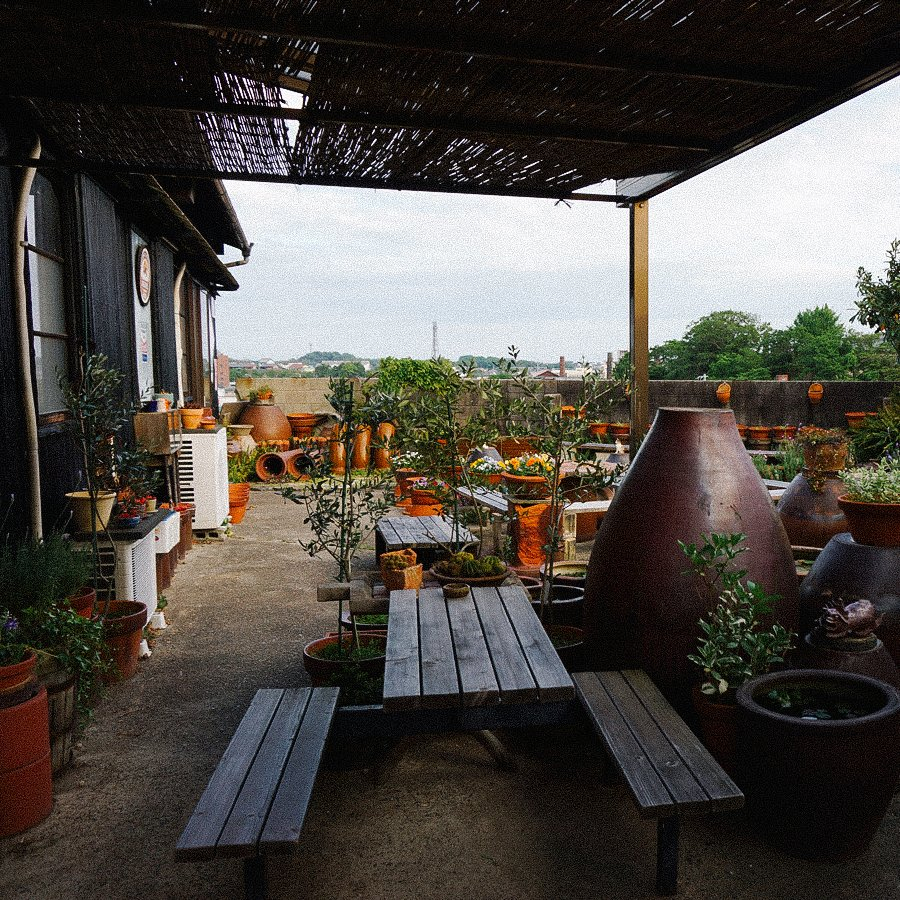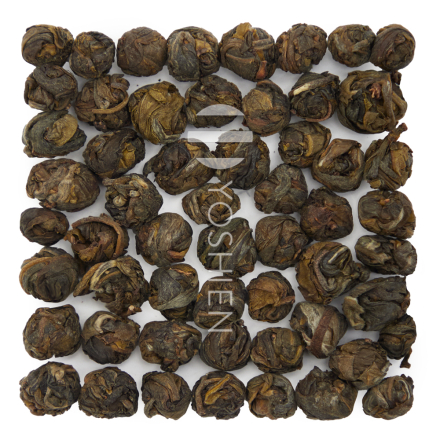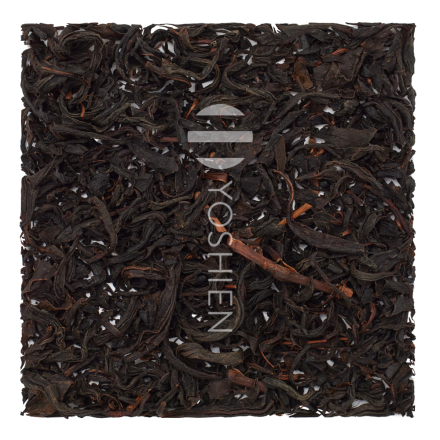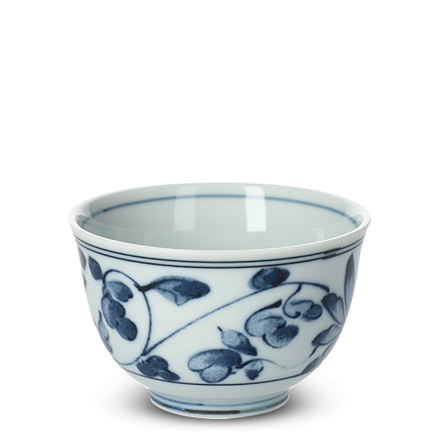Yōhen 窯変
Literally “kiln change”, Yōhen refers to the variations in colour and texture on the surface of ceramics as a result of the firing process. This is a feature found across various Japanese pottery styles including Tokoname, Bizen and Tenmoku. Within Tokoname-yaki, the typical two-tone Yōhen effect can be achieved by firing the ceramic item for a second time in a reduction furnace, partially buried in rice husks or ashes, so that only the exposed part changes colour.



